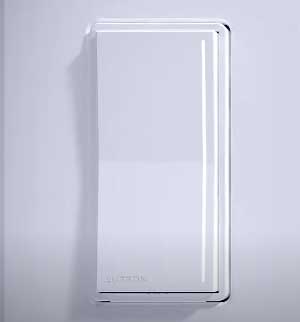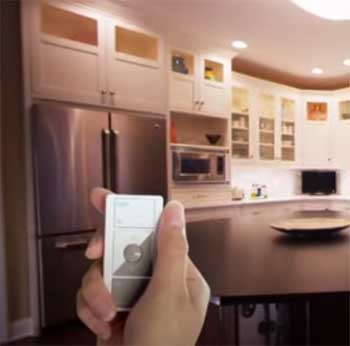Control switch systems are very important for a convenient smart home control system. Lutron’s Sunnata and Maestro are the two most common options for this.
Sunnata functions at a higher frequency have a bigger range and are less convenient and pricier. Maestro works at a lower frequency, has better features and a bigger range, and is convenient and affordable.
Smart home control systems might be an old idea but the development isn’t. There are so many good options like Lutron’s Sunnata and Maestro, but which one should you pick? Here’s a comparison to help you decide.
A Quick Summary of the Comparison
| Features | Lutron Sunnata | Lutron Maestro |
| Structure and features | Works at 2.4GHz, crowded, and fewer special features | Works at 434MHz, less crowded and more special features |
| Range and convenience | More control options and a smaller range | Fewer control options, bigger range |
| Price | Affordable | Pricier |
And that’s the gist of the whole thing. Keep reading below for the detailed breakdown.
Key Differences Between Lutron Sunnata And Maestro
Both switches are really close in overall quality. They have a solid reputation and if you look at public opinion, it’s almost evenly split.
That doesn’t mean they’re identical twins in any way. They have their differences but those are usually pretty small.
Structure and features, Range and convenience, and price are the major differences between Lutron Sunnata and Maestro.
Let’s see how these work out in both switches.
- Structures And Features

The structure is just the frequency the switch systems operate on.
The Sunnata system works in a higher frequency range but has fewer special features.
Maestro works in a lower frequency range but has more special features.
Sunnata works at the 2.4GHz frequency range.
This system uses a mesh network which makes it a little crowded. 2.4GHz isn’t a bad frequency range, there are just too many devices.
Everything is too crowded so the signal can sometimes get interrupted.
Sunnata also has fewer features than Maestro. It doesn’t have the power failure memory feature and you can’t customize the delayed fade-to-off feature either.
Maestro on the other hand is almost the opposite. It works in the 434MHz frequency range. Since there are fewer devices operating in that spectrum, it is easier to get the signal across without interference.
It also has the power failure memory and delayed fade-to-off feature.
- Range And Convenience
Sunnata works better in smaller spaces and it has more control options. You can control the switches using the mobile app.
Maestro works really well in bigger spaces, but it has fewer control options.
Sunnata has multiple control options. You get the switch, the pico remote and the mobile app as a wireless option.
So for convenience, Sunnata is hard to beat. But the signal issue overshadows the convenience sometimes.

Whether it is because of the frequency range and too many devices or the mesh network, Sunnata seems to fumble up in bigger areas.
The controls sometimes lose signals. This takes away the convenience points from Sunnata.
Maestro on the other hand has a different kind of wireless controller.
You have the switch and the pico remote for control.
What it lacks in control convenience, it makes up with strong signals.
Maestro works really well in bigger spaces and doesn’t lose signal.
- Price
Sunnata costs more than the Maestro switches. The accessory switch from Sunnata goes for $20.97 while the Maestro goes for $27.99.
Plus you’ll have to buy the wallplate separately which will drive the cost up higher.
Which One Is a Better Fit for You?
This one is a little tricky to answer. Both systems have their pros and cons, which is why they’re both so popular. But they’re also pretty close overall.
That makes picking one from two options hard. so more than suggestions, it is better to figure this one out on your own. As you can guess, there is no straight answer to this.
But that doesn’t mean you can’t pick one. Things will come down to your preference in the end. But if you want a more objective solution, you’ll have to look at other features besides the price tag.
If you’re looking for something that is good in a smaller area and needs convenience over anything else, the Sunnata is better for you.
This is pretty good for smaller spaces and fewer devices. The mesh network makes it a little crowded, but that usually doesn’t matter much for small spaces. Plus you can control it from your phone app.
Sunnata is, fortunately, more affordable than Maestro. If that’s something you’re aiming for, go with Sunnata. Watch this video to understand why I recommend it.
If you’re looking for a system to control a bigger area and don’t want crowded signals, Maestro is a no-brainer for you. This is the most convenient system gets for larger areas.
They’re easy to connect and expand. Plus you don’t have to deal with mesh networks and scrambled signals.
If you don’t mind splurging, Maestro is the best you’ll get. The only downside for Maestro is that you can’t control it from mobile apps.
You get a wireless remote instead. But this gets covered with how smooth the setup is overall, so no worries there.
Overall, Maestro is a better option in this case. But if you’re specifically aiming for something affordable or want something for a smaller space, Sunnata is a good option.
Frequently Asked Questions (FAQ)
Here are a bunch of questions people ask about Sunnata, Maestro, and other Lutron systems in general.
Mostly the switches. Dimmer Diva has a toggle switch and uses a slider option for dimming. Maestro comes with a push button and uses a rocker button to dim the lights.
The main difference is the control methods. Maestro only has the pico remote as a wireless control option. Caseta has that and it can convert your phone into a remote.
Sunnata works with all kinds of bulbs. LED, incandescent, halogen- you can go with anything.
Final Verdict
Smart switches are amazing and Lutron is the most popular name for switch options. Both Sunnata and Maestro are good options, which is why there’s a whole Lutron Sunnata and Maestro debate.
In the end, the answer will depend on your preference. But if you want an objective option, Maestro is the clear winner.
